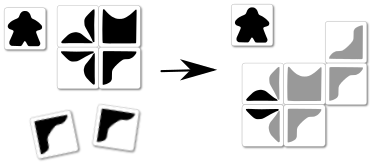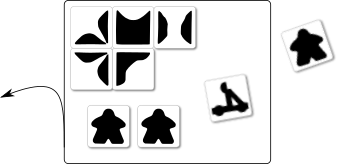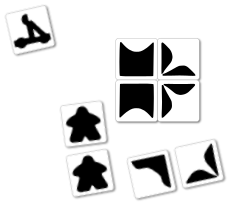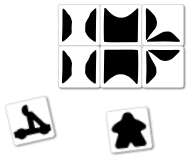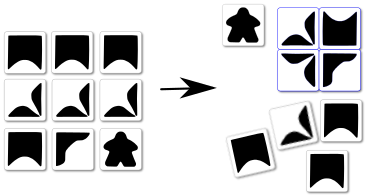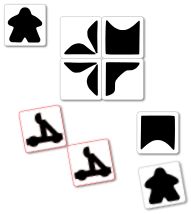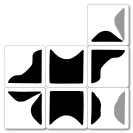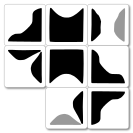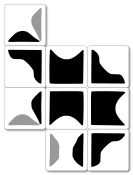Jocul de zaruri
Informații generale și comentarii
Acesta este jocul de zaruri oficial pentru Carcassonne. Un joc pentru 2-5 jucători lansat ca parte a celei de a zecea aniversare a jocului Carcassonne de către Hans im Glück în 2011. Proiectat de Olivier Lamontagne și Klaus-Jürgen Wrede.
Conținut
Jocul vine într-o cutie de metal în formă de meeple care conține:
- 9 zaruri Carcassonne cu șase fețe cu următoarele fețe:
- 4 segmente de oraș
- 1 cavaler
- 1 catapultă
- 1 carnețel
- 1 creion
Privire de ansamblu
În jocul de zaruri Carcassonne, jucătorii folosesc cu istețime aruncările zarurilor pentru a încerca să construiască orașe închise cât de mari pot - cu cât mai mari, cu atât mai bine.
Reguli
Desfășurarea jocului
Jucătorii aruncă zarurile în ordinea turelor. Jucătorii aleg un jucător de start care începe și ia toate cele 9 zaruri. În tura unui jucător, acesta aruncă zaruri până la de 3 ori și apoi încasează rezultatul său (vezi secțiunea evaluării). Apoi înmânează zarurile vecinului său din stânga, care continuă jocul.
Un jucător aruncă toate zarurile dinaintea lui la prima aruncare. Dacă aruncă 1 sau mai multe catapulte jucătorul înmânează imediat acele zaruri jucătorului din stânga sa (nu poate nici rearunca catapultele, nici încasa pentru această aruncare).
Atunci când un jucător aruncă cavaleri și segmente de oraș, are posibilitatea de a le pune deoparte sau de a le rearunca după cum alege. Atunci când un jucător pune segmente de oraș deoparte, trebuie imediat să construiască un oraș cu ele. Jucătorul nu are posibilitatea de a reconstrui segmente de oraș deja construite. Cavalerii, odată puși deoparte, nu pot fi rearuncați.
Dacă un jucător strânge 3 sau mai mulți cavaleri, are posibilitatea de a alege să nu încaseze puncte în această tură și apoi să își dubleze punctajul pentru tura următoare. Păstrează 1 cavaler și înmânează toate celelalte zaruri vecinului său din stânga. În următoarea sa tură, jucătorul adaugă zarul cu cavaler la zarurile înmânate lui și le aruncă. Prin urmare, fiecare jucător poate să aibă un cavaler, reducând zarurile pentru alții.
City building
The player tries to build as large a city as possible with the dice he rolls. During the scoring, he scores the number of dice in his largest city.
City building rules
- The black parts are the city segments.
- Black parts are played next to black parts and white parts next to white parts.
- Once a die is used to build, it may not be re-rolled.
Evaluare
After a player has rolled 3 times or chooses not to roll again, he may score his turn. The rules for scoring are:
- Only the dice of the largest closed city are scored (if the player did not build a closed city, he scores no points).
- If the player had a knight at the beginning of his turn, he scores double the points.
- The points are recording on the score pad.
- The points are scored as follows:
- 3 dice = 1 point
- 4 dice = 3 points
- 5 dice = 6 points
- 6 dice = 10 points
- 7 dice = 15 points
- 8 dice = 21 points
- 9 dice = 28 points
Game end
As soon as a player has scored 42 total points, the game ends and that player is the winner.
Special case: if a player rolls 9 catapults during his turn, he wins immediately, regardless of the points he scored so far in the game.
Additional information
This section extends the basic information provided in the rules.
Detailed turn example
This example provides additional details about the impossibility of moving the dice placed as city or re-rolling knights.
